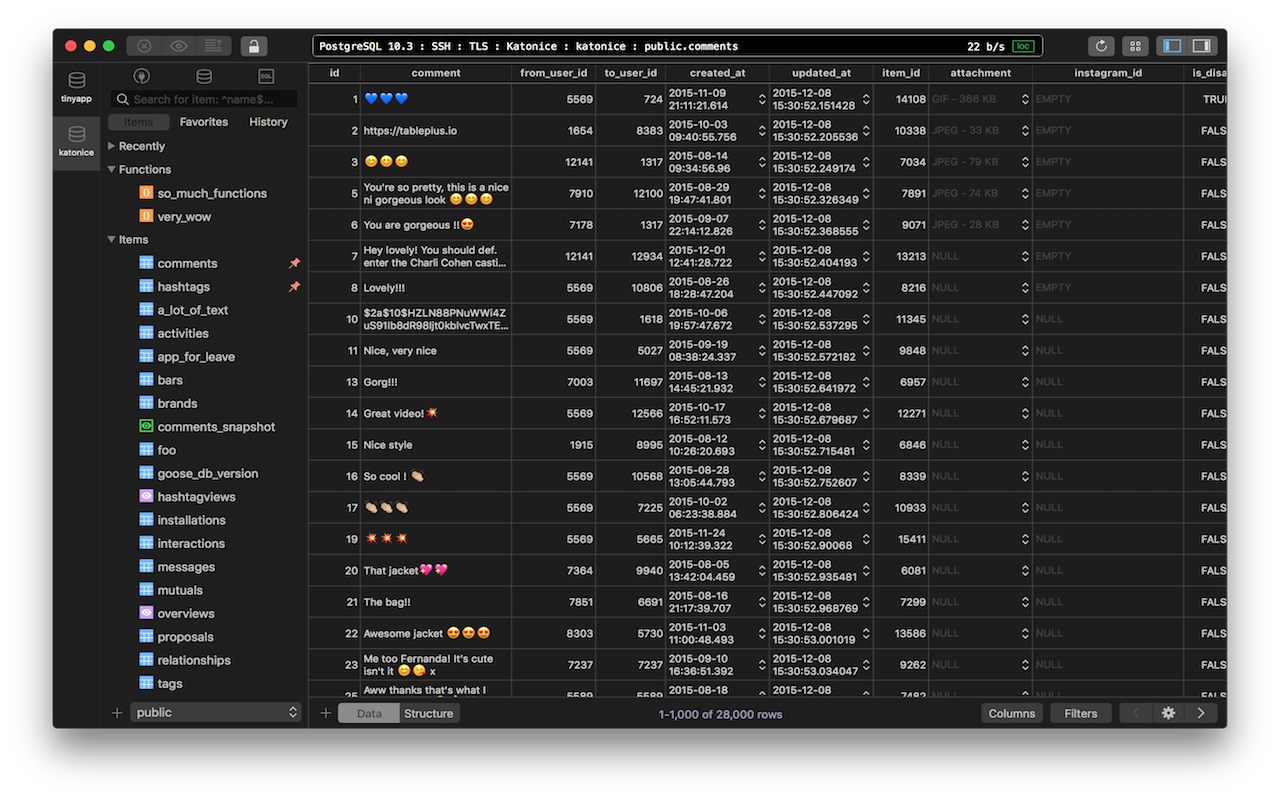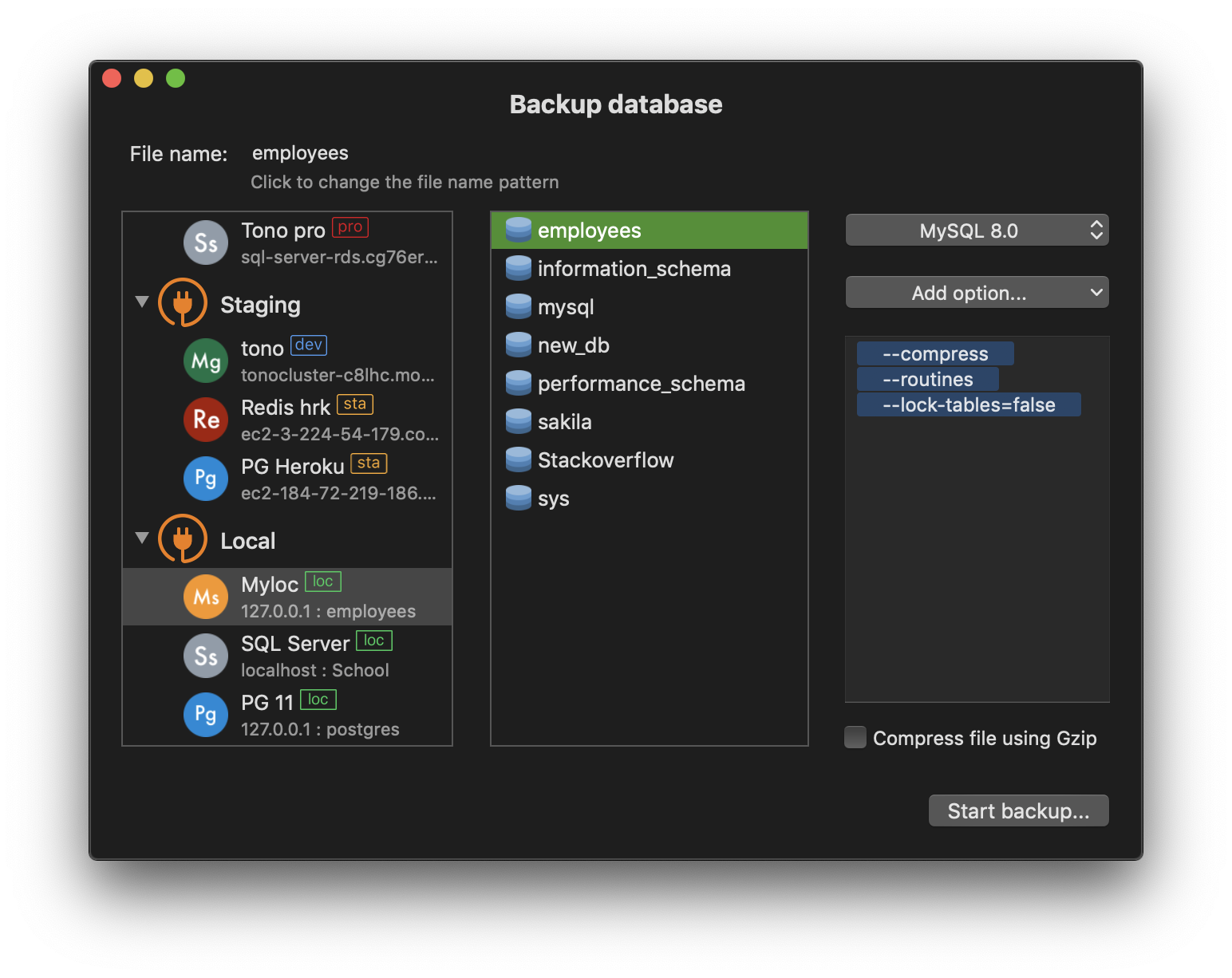

This can be extremely helpful and eliminate the need to hit the database multiple times if you are using linked tables. Perfect for fetching a single value like the highest ID, or first timestamp of a result set.Įach of the different functions takes in different arguments (values) and provides slightly different options and functionality. For example, the runPrepUpdate() can return the auto-generated key from insert queries.

Used when you want only one value from your results.
#TABLEPLUS VIEW SQL PRINT UPDATE#
Usually used on input form windows to update your database records. Used to run queries that change the data in the database. This can be used to populate tables, or to sift through the data to do your own calculations. Used to run basic SELECT queries to fetch whole datasets. Used to run a previously setup Named Query from within a script. Finally, the SQL Query option will accept a straight query, so that a query specific to that binding can be written directly in the binding. When binding to a basic (non-dataset) data type, you can use the Writeback feature directly to send any changes back to the database. This allows even users with little SQL knowledge to pull data from the database. The DB Browse builder provides an interface that will build the query based on the data in the table that was selected. The Named Query binding allows you to select one of the Named Queries that were previously built for that project, offering a very secure method of pulling data from the database. Ignition's binding system offers a lot of flexibility in how database data can be used in a binding. Some provide an easy to use builder to automatically store or fetch data, and some allow you to completely customize your queries.

There are many types of queries, and many ways to use them in Ignition.


 0 kommentar(er)
0 kommentar(er)
